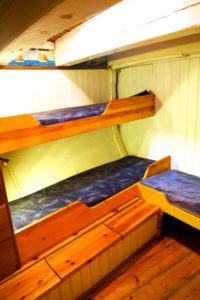Ships are of course the heart of shipping companys.
Our heart will be the Paladin!

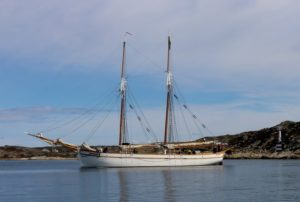
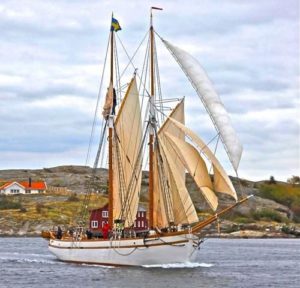

When we have the money for the Paladin together, hopefully this year, she will be our first ship. Our goal is that we have in the next ten Years a fleet of sailing vessels, like in every ocean at least one.
Now with our one Schooner, we have to criss cross the planet when we start to sail international.
Because the O.H.S.C. is going to work and help worldwide!

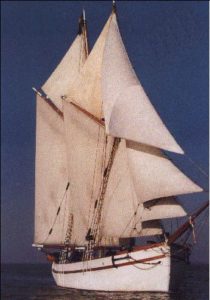
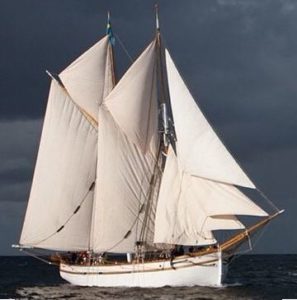
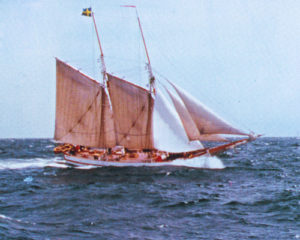
If you need the Paladin for your project, then please go on our CHARTER page and send us an e-mail to: charter@ohsc.eu
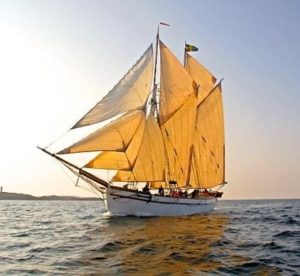



The History: The Paladin is a 105 year old fully restored two masted wooden Schooner. She was specially build in 1913 as a baltic trader to transport 30 tons of granite blocks and boulders.
She had to handle well when fully laden and unladen, in ballast, and navigate the notorious short steep chop of the fickle baltic sea and also the rough north sea in various directions without a engine.
Her plans reveal she has a classic fish-form hull, with a wide and high bow section tapering off to a narrow stern, and said to give increased speed through steep seas.

Because of her heavy freight of granite boulders for what she was actually build for, the Paladin has super massive oakframes with just short distances in between and a 3 inch thick outer planking. That means her outer hull is 7,62 cm thick. That’s really a lot on wooden ships!
We could sail with her even into arctic regions. She is the only one left of it’s kind under the baltic traders, which such a strength. Paladin is an enormous bold and solid ship.
She was even transporting the famous Swedish granite for the Empire State Building in New York from Sweden to Germany for the further shipment to the U.S. and a lot of other Swedish black, white and pink granite for monuments and cityhalls arround the world.
Paladin was also sailing saltpeter from Norwegian mines to the Swedish dynamite industry of Alfred Nobel. During the 2nd. worldwar for example, the ship owner family were forced by the Germans to sail coals from Poland to Germany for ballbearings for the German military, otherwise they would have burned there ship. The only income.
This was just a short cut out of her life, how she is already woven into our worldwide maritime history. She was surviving two worldwars and many storms and seaice on the north sea and in the baltic sea. Amazing as well is that she was since 1913 every single year in the water!
There was never a lack of use, she was never layed up ashore, and she had always owners who loved her which were great caretakers. That’s the reason wy she stayed so young and in such a nice and amazing condition. Some years ago, her last great caretaker past away. That’s wy we’ve got the chance now, to write maritime history with her again.
Technical datas and equipment:
Dimensions:
The Paladin has a lenght of 34 meters, a height of 22 meters and a width/beam of 5,86 meters. Her depth/draft is 2,5 meters. She has a GRT tonnage of 69 tons and a Displacement of 120 tons.
Electrical
• 220v 50Hz AC Shore power & 24v DC Board power
• Five heavy duty marine batteries
• Two isolated for engine, three for Board power
Navigation Instruments
• Garmin GPSMAP 720s
• Sailor 6215 VHF DSC radio (waterproof), with extra external speaker and handset
• Traditional gimballed compass
• Ship’s brass clock & barometer and binoculars
• Raytheon radar – Pathfinder SL70
• Furuno Navtex NX 300 Navigator
• Sailor Skanti 1000 VHF
• Phillips ap Navigator MK8 GPS
• Raymarine ST60 navigation instruments – 3
• Mc Murdo R2 GMDSS handheld emergency radio
• McMurdo RT 1 emergency radio
• McMurdo RT 9-3 SAR radar transponder
• ACR Globalfix GPS RLB-35
Engine and Mechanical
• Volvo Penta MD100B, six cylinders, diesel 198 HP (reconditioned) – Consumption approx: 10 litres per hour at 6-7 knots
• Engine driven alternator
• 2-blade variable-pitch propeller.
Sails
Her working sail plan is unusually long and low, meaning that she can hold her full working-sails in strong winds without needing to reef. Tall topmasts enable her to fly additional topsails in lighter winds.
Paladin is noticeably quick off the mark with gentle winds or a breeze already, and is easy to handle, with just three experienced sailors on deck. She is a really fast sailing vessel.
Like the ship itself, is her Rigg solid and in excellent condition.
Her Dacron set of Sails is in excellent condition.
Even her old spare set of Duradon is still in good condition.
Total sail area: 310m2
• Flying jib – 35m2
• Outer jib – 17.5m2
• Inner jib – 17.5m2
• Fore Staysail – 22m2
• Foresail – 55m2
• Fore topsail – 23m2
• Mainsail – 82m2
• Main topsail – 28m2
• Fisherman – 30m2
Spars
• Foremast & Fore topmast – Columbian Pine
• Mainmast & Main topmast – Columbian Pine
• Foremast boom & gaff – Columbian Pine
• Mainmast boom & gaff – Columbian Pine
• Bowsprit with dolphin striker & jibboom – Sitka Spruce
Standing Rigg
• Traditional, galvanized, wormed, parceled & served
Deck Equipment
• Large storage boxes, for warps, lifejackets and other things, that also serve as outdoor seating
• One wooden box with 2 LPG tanks in a metal frame inside
• The unvarnished (non-slip) foredeck cover provides storage for fenders, spare anchors and other equipment. There is a lot of space as well on deck to store equipment of clients, nicely and seatight.
Ground Tackle
• Original 1913 Johansson of Karlshamn cast-iron dual-lever action, driving a traditional horizontal wooden windlass. This system is so lowtec, symple and solid, that it’s absolutly failsave. It runs since over hundred years!
• Galvanised Bruce anchor 30kg, 10m chain, long warp
• The original pair of admiralty kedge anchors from 1913, are catted at the bow
• Each anchor has 50m of merchant marine studlink chain in chain locker
• Extensive warps carried
Safety Equipment
• 6 x self-inflating life jackets with harnesses, 10 x emergency dry-suits
• 20 life vests, in deck boxes
• Dan buoys
• Bosun’s chair
• Wooden boarding steps
• Boarding ladder – rope and timber
• Epirb buoy + 24-person RFD life raft in canister
• + another 25-person Viking life raft in canister
• Various harnesses for working aloft in the mast
• Medical kit and flares etc.
Tankage
• Diesel: 1400 litres in two 700 litre tanks
• Water: 500 litres
• Black water: 250 litres
• Single 500 litre poly tank
(the tankage will get expanded for worldwide sailing)
Heating/Plumbing
• Electric water heater in galley
• Traditional upright diesel furnace in saloon with heating pipes through the ship
Bilge Systems
• 220v bilge and main fire 1½” pump
• 24v Auxiliary fire 1¼” pump with deck outlets fore & aft
• Manual deck mounted bilge pump
• 2 x automatic high capacity bilge pumps in galley & saloon with outlets through hull and non-return valves
• Engine room pump running off the engine
Fire Fighting
• Fire hose connection to engine pump, and another Fire hose fitting on Deckhouse
• Machinery manual shut down
• Gas alarm in galley. Separate in-line stop taps
• 4 fire extinguishers, 2 fire blankets, in galley/crew area
Tenders
• One traditional clinker-built Jollyboat sailing dinghy, with oars, mast, sail and rudder, mounted on the traditional stern davit + a rubber dinghy and outboarders for both
If you want us to sail for you, please go to our CHARTER page and send us an e-mail to: charter@ohsc.eu
On deck:
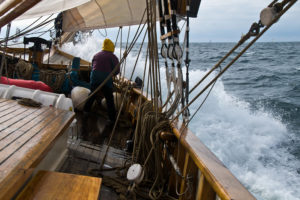

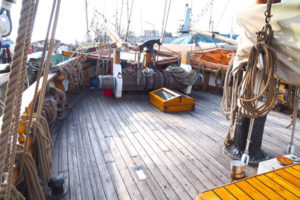


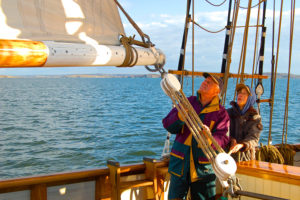

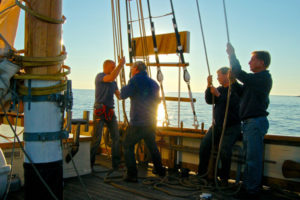
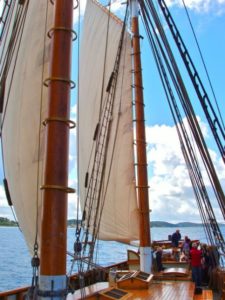
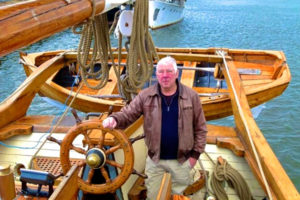
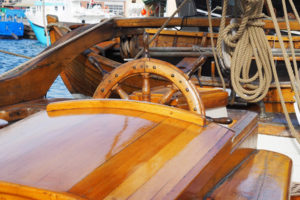

Below deck:
She has berths for maximum 15 people aboard.
6 berths are in the saloon (mess) as traditional open bunkbeds.
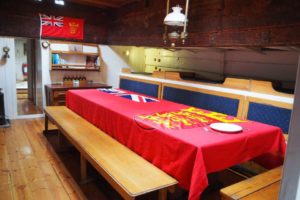
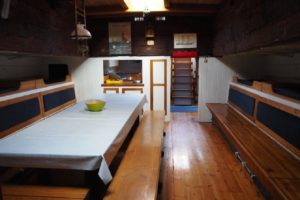
Then there are 4 berths seperate in the bow:
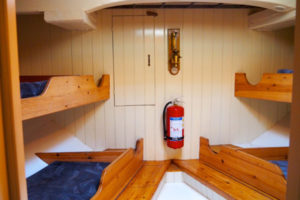
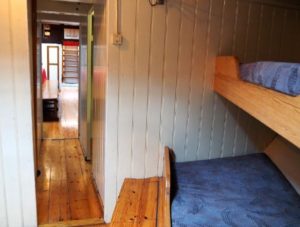
Another 4 berths are in the cabins on port- and starboardside between the forward berths in the bow, and the mess. two berths in each cabin:
The last two berths are on both sides in the captains cabin in the stern of the ship:
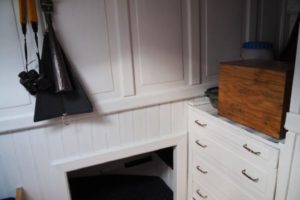
The paladin has a fully equiped galley with a lot of space:
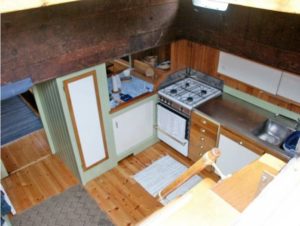
There is a toilet and washing cabin aboard. We will add a shower into it, as soon as we have the desalination plant installt.
Boatswainstore:
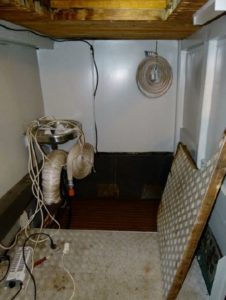

The Boatswainstore is again a place to store goods or any kind of gear and equipment, which have to stay dry. Underneath the floor of the boatswainstore as you can see on the picture above, is the reliable 198 hp marine volvo pentha MD100B Engine.
Refits:
The Paladin was recaulked, refastened and repainted in 2014.
The work was carried out by shipwrights guided by the advice of a German surveyor. He found the timbers of Paladin were sound and in good order. The entire underwater hull was re-caulked, involving a seam length of 700m. The project required six processes for each seam because of the thick planks, giving a total work length of 4.2 km.
Areas of the topsides were also caulked as needed, and just four planks required short sections to be replaced. The condition of the Paladin was very good for her age. It shows us that she was all the time well maintained by the previous owners.
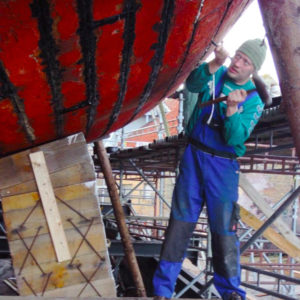
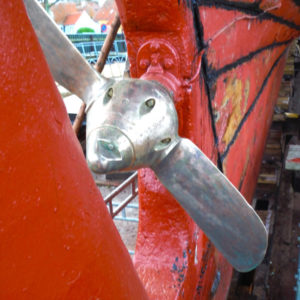

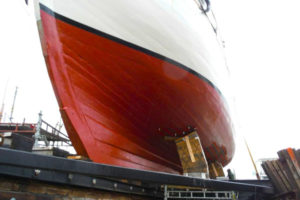
Her whole underwater ship was fastened again and some of the topsides planks as well. Firstly, all underwater plank end bolts were replaced by traditional hand-made oak treenails, and capped by oak plugs.
The existing 1913 treenails were in good condition and did not need replacing. The original Scandinavian pine planks (3″ X 9″) were found to be in very good condition reflecting the very high quality of the original shipwright’s selection of materials. Secondly, for the sake of consistency, all the old nails were removed and replaced in their entirety with over 2,000 new galvanised 8″ square-section steel nails, hand driven by two-man teams.
The hull seams were fully checked and all plank-end seams were replaced with oakum caulking. The hull was primed and given two coats of Hempel’s anti-fouling paint before she was refloated.
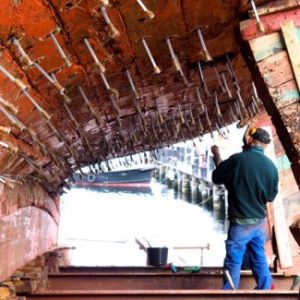
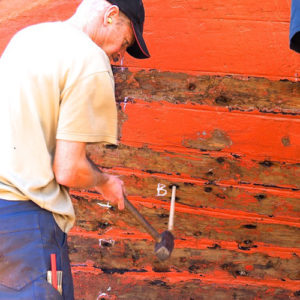
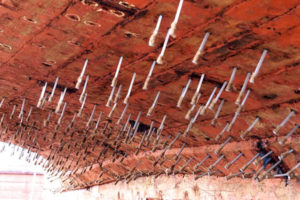
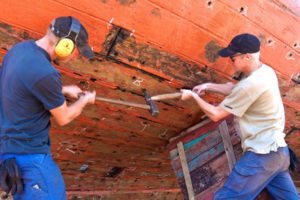
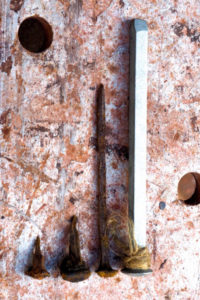

This major work produced a stiff, reliable and waterproof hull. The refastening work was also inspected by a German surveyor, and she was even re-valued (upwards) and given a new insurance valuation and full european Buoyancy Certificate.
Now the hull is done and she is almoust ready for her worldwide missions of the O.H.S.C.
If you need help from the O.H.S.C. and the Paladin for your project, then please take a look on our CHARTER page and send us an e-mail to: charter@ohsc.eu
